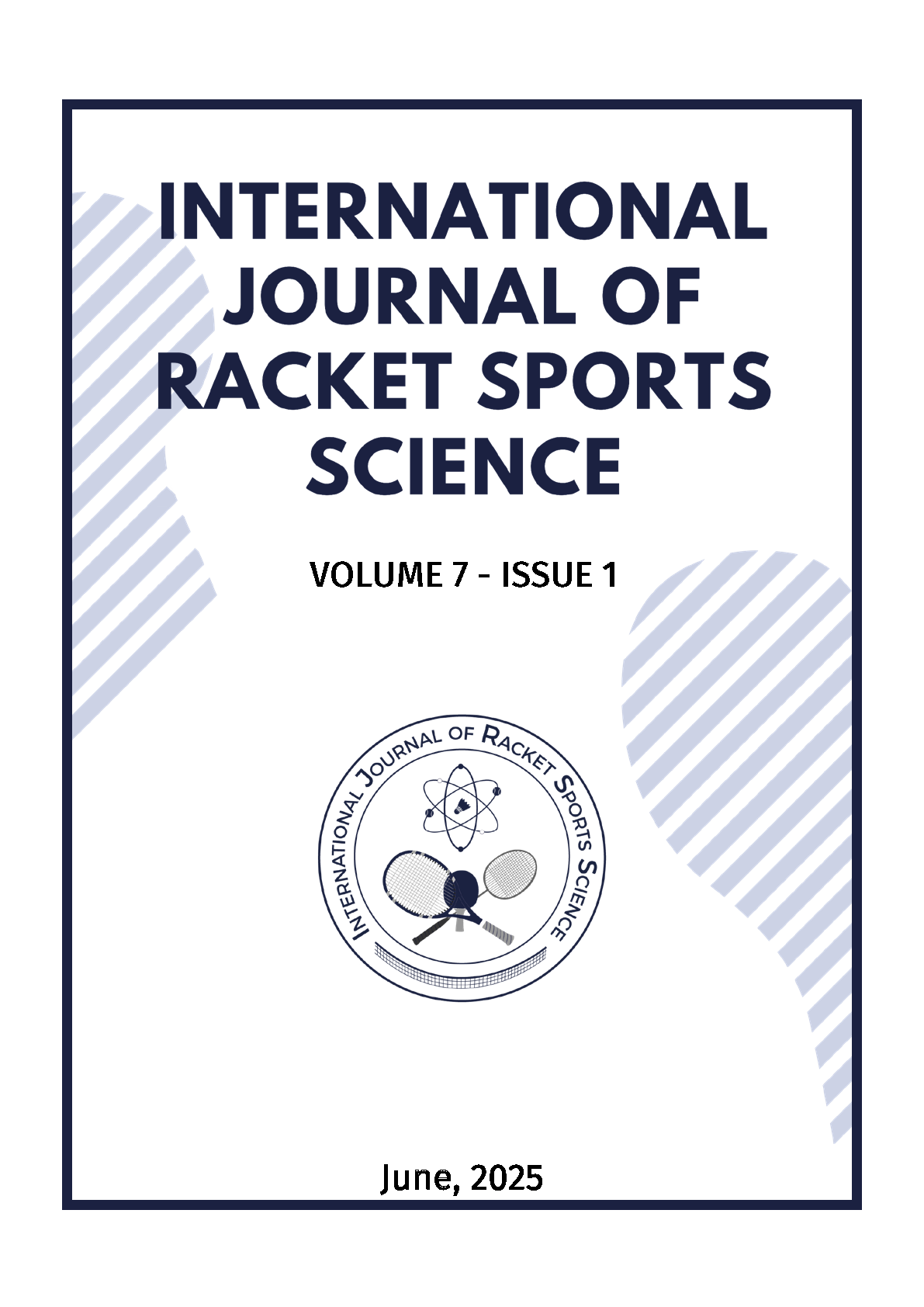Quantifying and Predicting Momentum in Tennis Match via Machine Learning Approach
Abstract
This study aims to identify and analyze momentum shifts in tennis, developing a data-driven model to quantify and predict these shifts and assess their influence on match outcomes. Using data from 6 tournaments, including 564 matches and over 135,000 points, this study constructed a momentum calculation model integrating 14 weighted match factors such as point progression, server advantage, and player ranking differences. The model incorporates adjustments for set discontinuities and initial momentum based on player rankings to enhance predictive accuracy. Following data processing and validation, a Kappa consistency test was performed on the 2023 Wimbledon Championship data, yielding a high alignment with actual outcomes (Kappa = 0.96). Using a Gradient Boosting Decision Tree (GBDT) regression model, the study achieved a high accuracy in predicting momentum shifts, identifying key variables such as serve advantage and score gaps as primary indicators of performance dynamics. This model further revealed that players' momentum tends to stabilize at critical points, such as 40:30, while fluctuating more at disadvantageous scores. These findings highlight the model's utility for pre-match analysis, enabling detailed insights into opponents' tactical patterns and psychological responses under varying score conditions. Overall, this momentum model provides valuable applications for enhancing player preparation and in-game strategic adjustments, offering coaches and players a quantifiable tool to interpret and influence match outcomes.
References
[2] Merriam-Webster. 2024. Momentum. In Merriam-Webster.com dictionary. Retrieved October 17, 2024 from https://www.merriam-webster.com/dictionary/momentum
[3] Sampaio, T., Oliveira, J. P., Marinho, D. A., Neiva, H. P., & Morais, J. E. (2024). Applications of Machine Learning to Optimize Tennis Performance: A Systematic Review. Applied Sciences, 14(13), 5517. https://doi.org/10.3390/app14135517
[4] Bayram, F., Garbarino, D., & Barla, A. (2021). Predicting Tennis Match Outcomes with Network Analysis and Machine Learning. Conference on Current Trends in Theory and Practice of Informatics.
[5] Tognini, M., and Perciavalle, V. 2022. Real-Time Data and Machine Learning in Sports Performance Analysis: A Case Study on Tennis. Journal of Sports Science & Technology, 21(4), 98-111.
[6] Iso-Ahola, S. E., & Dotson, C. O. (2014). Psychological Momentum: Why Success Breeds Success. Review of General Psychology, 18(1), 19-33. https://doi.org/10.1037/a0036406
[7] Zheng Cao, Price, J., & Stone, D. F. (2011). Performance Under Pressure in the NBA. Journal of Sports Economics, 12(3), 231-252. https://doi.org/10.1177/1527002511404785
[8] Jon, M. 2022. Capturing Momentum in Tennis. Opta Analyst. Retrieved October 10, 2024 from https://theanalyst.com/2022/03/capturing-momentum-in-tennis
[9] Dietl, H., Nesseler, C., 2017. Momentum in tennis: controlling the match. UZH Business Working Paper Series 365, University of Zurich.
[10] Moss, B., & O’Donoghue, P. (2015). Momentum in US Open men’s singles tennis. International Journal of Performance Analysis in Sport, 15(3), 884–896. https://doi.org/10.1080/24748668.2015.11868838
[11] Zhong, M., Liu, Z., Liu, P., & Zhai, M. (2024). Searching for the effects of momentum in tennis and its applications. Procedia Computer Science, 242, 192-199. https://doi.org/10.1016/j.procs.2024.08.262
[12] Ahmed, T. 2014. Modelling Probabilities in Games of Tennis. IB HL Maths Portfolio Type II. Oaktree International School.
[13] Noel JTP, Prado da Fonseca V, Soares A. A Comprehensive Data Pipeline for Comparing the Effects of Momentum on Sports Leagues. Data. 2024; 9(2):29. https://doi.org/10.3390/data9020029
[14] Qiu, M., Zhang, S., Yi, Q., Zhou, C., & Zhang, M. (2024). The influence of "momentum" on the game outcome while controlling for game types in basketball. Frontiers in Psychology, 15, 1412840. https://doi.org/10.3389/fpsyg.2024.1412840
[15] Ötting, M., Langrock, R. & Maruotti, A. A copula-based multivariate hidden Markov model for modelling momentum in football. AStA Adv Stat Anal 107, 9–27 (2023). https://doi.org/10.1007/s10182-021-00395-8
[16] Wang, L., & Lin, H. (2005). MOMENTUM TRANSFER OF UPPER EXTREMITY IN TENNIS ONE-HANDED BACKHAND DRIVE. Journal of Mechanics in Medicine and Biology, 05, 231-241.
[17] Martínez-Gallego, R., Guzmán, J., James, N., Pers, J., Ramón-Llin, J., & Vučković, G. (2013). Movement characteristics of elite tennis players on hard courts with respect to the direction of ground strokes. Journal of Sports Science & Medicine, 12, 275-281.
[18] Sackmann, J. 2024. Tennis slam point-by-point data. GitHub. Retrieved May 10, 2024 from https://github.com/JeffSackmann/tennis_slam_pointbypoint
[19] Klaassen, F. J. G. M., & Magnus, J. R. (2001). Are Points in Tennis Independent and Identically Distributed? Evidence From a Dynamic Binary Panel Data Model. Journal of the American Statistical Association, 96(454), 500–509. https://doi.org/10.1198/016214501753168217
[20] Cohen, J. (1960). A coefficient of agreement for nominal scales. Educational and Psychological Measurement, 20, 37-46. https://doi.org/10.1177/001316446002000104
[21] Lin, J., Shao, P., & Zhang, Q. (2024). Advancing tennis analytics: Comprehensive modeling for momentum identification and strategic insights. International Journal of Computer Science and Information Technology, 2(1), 104-117. https://doi.org/10.62051/ijcsit.v2n1.12
Copyright (c) 2025 International Journal of Racket Sports Science

This work is licensed under a Creative Commons Attribution 4.0 International License.










_(1).png)
